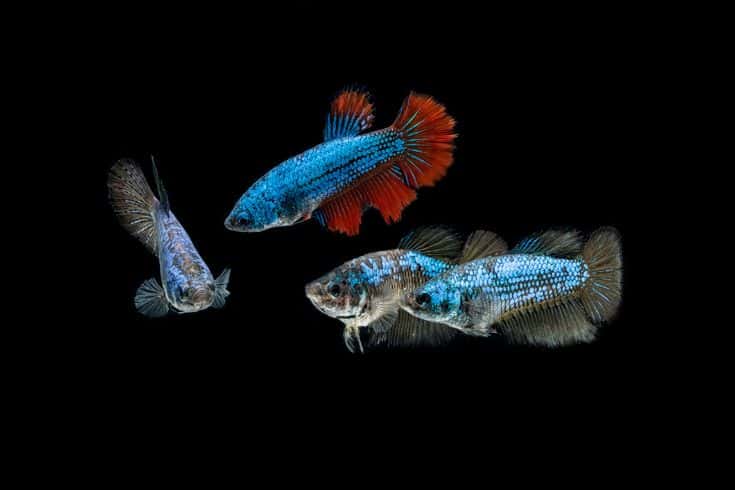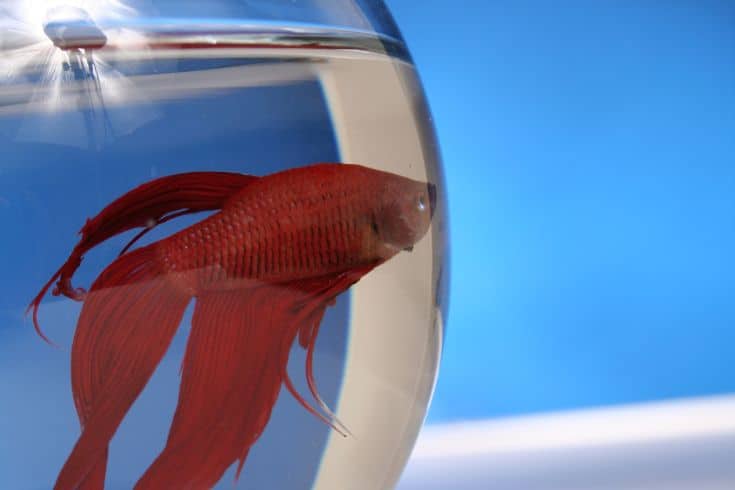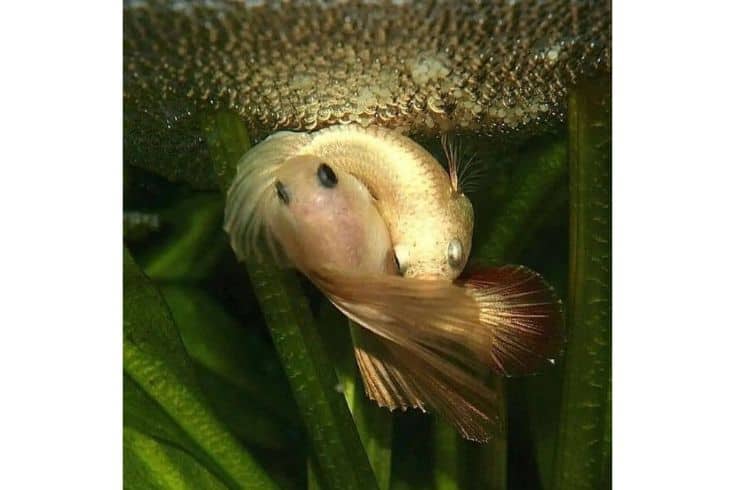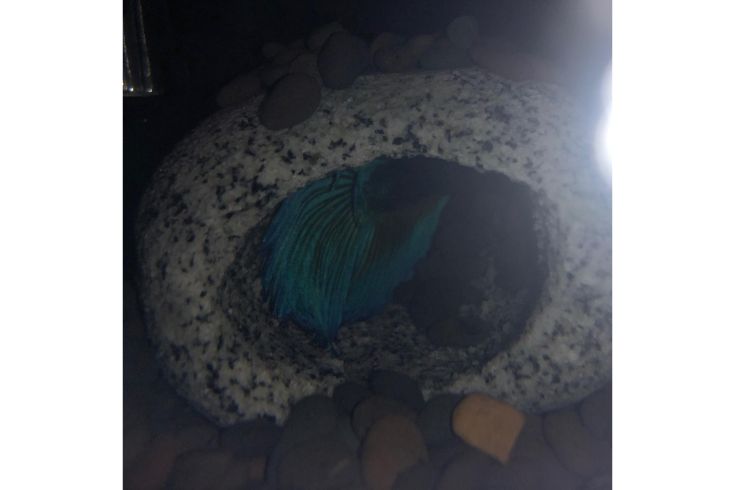Male or female, betta fish are both attractive and simple to maintain. To prevent fighting or the transmission of illnesses among other fish, most people would like only to keep one betta fish at a time. This is especially the case if you own male betta fish, as these are fish that will fight each other to the death.
On the other hand, female bettas are much more easygoing. They can be kept in sorority tanks, with other males, and even with fish of different species! However, you’ll need to ensure you set yourself up for success by introducing your female bettas appropriately.
So, how do you introduce female bettas to a tank? Read on and find out!
What Is A Betta Fish Sorority Tank?
Before delving into the actual introduction process, it’s important to understand what a sorority tank is.
A female betta sorority tank is simply a tank that exclusively houses female bettas. These tanks are often decorated with plenty of hiding places and plants to help the bettas feel secure. Most importantly, a sorority tank is larger than the typical solo tank, as it needs to accommodate more fish.
What Goes Into A Healthy Sorority Tank?
One of the most common scenarios is that you already have one female betta, and you’d like to add a second. Well, setting up a sorority tank is a great way to do that! When setting up your sorority tank, there are a few key things to remember:
The Right Number of Female Bettas
When done correctly, an all-female betta tank can be a beautiful and peaceful display. However, you should aim to house at least 4-6 female bettas in a sorority tank, as this will help to diffuse aggression and reduce the risk of bullying.
It may seem counterintuitive, but a larger group of female bettas is actually less likely to fight than a smaller group. This is because the aggression is spread out among more fish, rather than focusing on a single individual. Too little fish in a sorority tank can make establishing a hierarchy easier, thus leading to more fighting.

What about tanks that have too many female bettas? Generally speaking, as long as your tank is large enough, you can house as many bettas as you’d like. That said, be aware that a very large group of bettas may make it more difficult to spot signs of illness or injury.
Ideal Tank Size
Having the right tank size is critical for a healthy sorority tank. Given that a healthy sorority contains at least 4 -6 female bettas, you’ll need at least a 20 gallon tank. If you have the space, a larger tank is always better! This will give your fish plenty of room to move around and establish their own territories.
Tank size is so important because it provides each fish with enough space to swim and explore without feeling cramped. It also helps to prevent aggression, as fish are less likely to feel territorial in a larger space. Consider upgrading your tank if it’s on the smaller side to give your fish the best possible environment.
Bigger isn’t always better, though. If your tank is too large, maintaining water quality can be more difficult. This is because a larger tank has a greater volume of water, meaning that changes in water chemistry can happen more slowly. As a result, it may be more difficult to spot problems in a very large tank.
Proper Filtration
A good filter is essential for any aquarium, but it’s especially important in a sorority tank. This is because a larger tank with more fish will produce more waste. The usual rule of thumb is to have a filter that can turn over the entire volume of your tank at least 8 times per hour. So, for a 20 gallon sorority tank, you’ll need a filter that can move at least 160 gallons per hour.

In terms of filter type, canister filters and hang-on-back filters are both good choices for a sorority tank. Canister filters are often more powerful, but hang-on-back filters are easier to maintain. The right filter for your tank will depend on your personal preferences.
Strategic Décor
Tank decorations are some of a sorority tank’s most important yet underrated aspects. This is because the decorations you choose can either help diffuse aggression or worsen it. For example, sharp objects and bright colors are often associated with aggression in fish, so you’ll want to avoid these.
Instead, focus on adding decorations that provide plenty of hiding places and soft edges. Driftwood, live plants, and caves are all great choices. These decorations will help your fish feel more secure, reducing the likelihood of aggression.
In addition to hiding spots, accessories such as betta hammocks and tank lids will improve your fish’s quality of life in subtle but important ways. In the case of the former, having the betta hammock close to the water’s surface will allow your fish to breathe air without swimming to the top of the tank.
As for tank lids, they keep your bettas from jumping out and also help to maintain humidity levels in the tank. This is important because bettas are tropical fish and need a certain humidity level to stay healthy.
Effective Heating
Nobody is encouraging you to turn your home into a sauna, but your bettas will need a warm environment to thrive. In the wild, bettas are used to warm, tropical climates with water temperatures between 78 and 84 degrees Fahrenheit.
You can replicate these conditions in your home aquarium by using an aquarium heater. There are many different types of heaters on the market, but submersible heaters are often the best choice for a sorority tank. This is because they’re easy to hide and don’t take up much space.
When choosing a heater, make sure to get one that’s the appropriate size for your tank. It’s also a good idea to buy a heater with an adjustable thermostat so that you can fine-tune the temperature of your bettas’ water.
The Right Water Conditions
In addition to maintaining the proper temperature, keeping the water in your sorority tank clean and free of harmful chemicals is also important. The best way to do this is to use a water conditioner that removes chlorine and other toxins from your tap water.
It’s also a good idea to do regular water changes to keep the water quality high. As a general rule, you should change out about 20% of the water in your tank each week. If you have a very large tank, you may need to do two or three water changes per week to maintain water quality.
Many things go into creating a happy and healthy home for your betta fish, but these are some of the most important. By following these tips, you’ll be well on your way to setting up a thriving sorority tank.
Introducing Male and Female Bettas To Each Other
The second scenario is that you have a male and female betta and want to put them together in the same tank. Let’s consider whether this is a good idea and how you might do it.
Can Male And Female Bettas Live Together?
Theoretically, yes – male and female bettas can live together. In the wild, bettas live in large groups and don’t generally exhibit aggression towards one another.
However, things are a little different in a captive environment. For one, you can’t keep one male betta and one female betta together on a long-term basis. The male betta might become too aggressive and start harassing the female, leading to her death.
The best way to keep male and female bettas together is to house a single male with multiple females. Here’s a quick overview on how to go about doing so!
Step 1: Establish A Betta Sorority First
The first step is to set up a sorority tank with multiple female bettas. This will give the male betta a harem of females to choose from, and he won’t be able to single out any one fish in particular.
Forming a strong, peaceful sorority is important before introducing the male betta. This will minimize the chances of aggression and ensure that everyone in the aquarium habitat is comfortable with one another.
Step 2: Add The Male Betta To The Sorority Tank

Once the sorority tank is established, you can add the male betta to the mix. Start by adding him to a small enclosure within the tank (such as a breeding box or isolation tank) so he can get acclimated to his new surroundings.
After a couple of days, you can release him into the main tank. He should start to form bonds with the females and establish his place in the hierarchy.
Step 3: Observe The Tank For Any Signs Of Aggression
Even in a sorority tank, there’s always a chance that the male betta will become aggressive towards the females. Keep a close eye on the tank for any signs of aggression, such as chasing, nipping, or biting.
If the male betta starts to exhibit aggression, you may need to remove him from the tank and try again later. Time outs may seem a little juvenile, but trust us – they’re great at diffusing tension between bettas!
What If You Want To Introduce A Breeding Pair?
The process is slightly different if you want to introduce a breeding pair of male and female bettas. First and foremost, introductions will have to take place in a separate, transient breeding tank. Then, you’ll want to slowly introduce the female to the male by using a divider or a separate tank. Let them observe each other for a few days before removing the divider and allowing them to interact.

You’ll have a new breeding pair of bettas if everything goes well! Just be sure to keep a close eye on them, as the male betta may become too aggressive and hurt the female.
Introducing Female Bettas To A Community Tank
A community tank contains many different fish species, which makes adding female bettas a bit more complicated. The first thing you should do is ensure that the tank contains compatible tank mates. Avoid fish with aggressive personalities, or those with bright colors. These fish are more likely to trigger the betta’s aggression.
Once you’ve made sure the tank is compatible, you can start the introduction process. Begin by adding the female bettas to a small enclosure within the tank (such as a breeding box or isolation tank). After a few days, you can release them into the main tank.
Observe the tank for any signs of aggression, and be prepared to remove the female bettas if necessary. With a little patience and luck, the female bettas should be able to successfully integrate into the community tank!
Product Recommendations
1. A Large Tank: The minimum tank size is 10 gallons of water.
2. Water Filter: We recommend canister filters, as they are more effective in preserving the purity of the water than other kinds of filters.
Take a look at these:
3. Submersible Water Heater: This allows you to achieve the ideal water temperature.
Take a look at these:
4. Aquarium Water Hardness Test Kit
Take a look at these:
5. Air Pump: Your sponge filter will use this to water out from your tank into it.
Take a look at these:
- For 20-30 gallons Tank: Hygger Double Sponge Filter
- For 5-10 gallons Tank: UPETTOOLS Sponge Filter
6. Aquarium Divider: Give them a chance to meet so they may become accustomed to one another without risking their lives.
Take a look at these:
- ONly Board (No clips) DIY Designed Clear fish tank divider
- Aquarium Fish Tank Bottom Isolation, Grid Divider Tray Egg 4 Pcs (L 4pcs)
The right supplies will make setting up and maintaining a healthy environment for your female bettas easier. Along with the general tips and tricks we’ll delve into, having the proper equipment is crucial for success.
Now that we’ve covered the basics of female betta care, let’s move on to some more specific tips and tricks!
General Tips and Tricks For Female Betta Introductions
We know – even with the guides we’ve provided, introducing female bettas to a tank can be a lot of work!
But don’t worry – there are many ways to make these introductions go more smoothly.
Though not crucial, these general tips will come in handy regardless of whether you’re building a sorority tank or simply introducing a few female bettas to a male.
Rearrange The Environment If You Already Have An Established Betta
All bettas get comfortable with their environment over time. This means they might become territorial if you introduce new fish to the tank. One way to combat this is to rearrange the tank before adding new fish. This will disrupt the established hierarchy and give everyone a level playing field to start with.
You can rearrange the tank by moving plants, adding new décor, or simply flipping over rocks and gravel. Just be sure not to do it too often, as this will stress out the fish and make it harder for them to adjust.
Keep The New Arrivals Separate, But Visible

This is yet another general tip you can use, regardless of whether you’re introducing female bettas to a sorority tank, or to a male fish. Keeping the new arrivals separate serves two purposes – it allows them to acclimate to their new surroundings and prevents them from getting injured or killed by the established fish.
One of the best ways to do this is to use a divider in the tank. This will allow the fish to see and smell each other, but they won’t be able to hurt each other. You can also use a breeding box, isolation tank, or even a large plastic container with holes punched in it. You can even opt for a rudimentary setup consisting of two holding tanks placed side-by-side!
The core principle is to ensure that the established fish and new fish are able to see one another , all while being safely contained. This will help keep stress at bay and allow everyone to adjust more easily.
Make Sure The Tank Is Big Enough
Betta fish are happy in larger size tanks. To ensure everyone is comfortable, allocate at least 5 gallons of water per fish. This number increases if you have a sorority tank with multiple bettas, or if you’re planning to create a large harem for your male betta. But whatever you do, don’t overcrowd the tank.
Not only will this lead to aggression and fighting, it will also put a strain on the water filtration system. This, in turn, will lead to poor water quality – something that’s detrimental to the health of all bettas, regardless of gender.
Add Lots Of Hiding Places/Territories

Last but not least, the number of hiding spots in the tank is a crucial factor when it comes to successful introductions. Female bettas are both somewhat timid fish. Evolutionarily speaking, they are accustomed to living in environments where there are several places for them to hide from predators.
Therefore, creating lots of hiding spots for your female bettas is vital. It could take the shape of living plants such as tall plants or dense plants, natural rock caverns, or even ceramic hiding spots that you can purchase at your neighborhood pet store.
Bettas are less likely to grow upset and start fighting one another the more hiding spots there are. Additionally, giving your bettas lots of hiding spots can make them feel safer in their new surroundings.
The Takeaway
With patience and preparation, introducing female bettas to any tank is a relatively simple process. Remember that there are distinct processes for doing so, depending on whether you introduce female bettas to other females, to males, or to a community tank. Remember to take your time, be patient, and – most importantly – have fun!.
Did you enjoy this article? If you did, please feel free to share it with your friends! Thanks for reading, and may your fish always be happy and healthy!
